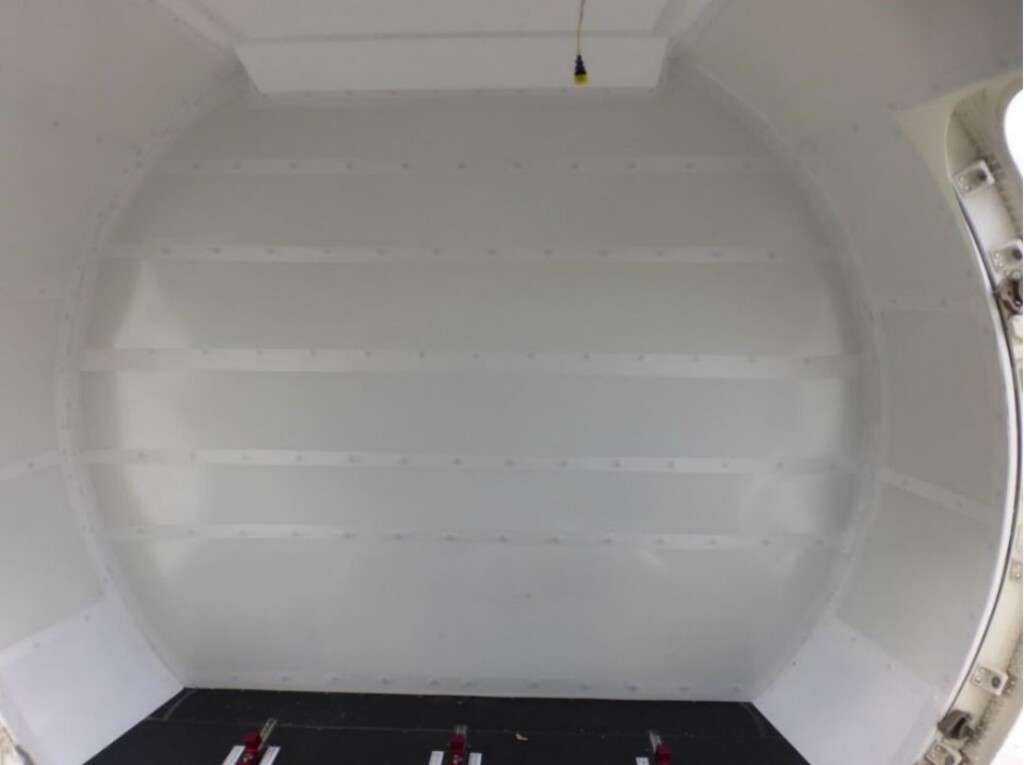Aeronautical Engineers, Inc. (AEI) today announced it has completed its first B737-800SF freighter conversion with a flat aft pressure bulkhead. AEI is currently the only conversion company that is able to modify aircraft with this feature.
“737-800s with flat aft pressure bulkheads represent a small percentage of the entire feedstock, yet AEI’s ability to convert all 737-800 line number aircraft is a huge convenience for our customers, especially leasing customers looking to place their aircraft around the world,” stated Robert T. Convey, AEI’s senior vice president of sales and marketing.
“AEI gives its customers the comfort of knowing their asset’s value will be extended without having to worry about any technical or engineering roadblocks that hinder other competing 737-800 modification programs.”
The 737-800 aircraft, MSN 30146, was modified by Commercial Jet’s Miami facility and has since been redelivered to the customer.
AEI can convert all 737-800 line number aircraft, including those with Split Simitar winglets and is also the only conversion company to have ETOPS 180 approval on the 737-800 aircraft.
The 737-800SF conversion
The AEI converted B737-800SF freighter offers a main deck payload of up to 52,700 lbs. (23,904 kg) and incorporates eleven full height 88” x 125” container positions, plus an additional position for an AEP/AEH.
The conversion also incorporates new floor beams aft of the wing box, a large 86” x 137” Main Cargo Door with a single vent door system.
[monsterinsights_popular_posts_inline]
AEI’s forward-thinking design allows for containers to be loaded into the aircraft a full 16.5” aft of the forward door jamb, ensuring ground operators have sufficient maneuvering room which minimizes potential door and aircraft strikes.
Additionally, the AEI B737-800SF includes a flexible Ancra Cargo Loading System, a rigid 9g barrier, five supernumerary seats as standard, a galley, and full lavatory.
About Passenger to Freighter (P2F) conversions
Passenger-to-freighter (P2F) conversions are a type of aircraft modification that transforms a passenger aircraft into a freighter. This is done by removing the passenger seats and other interior furnishings, and installing a cargo loading system.
P2F conversions can be performed on a wide variety of aircraft, including narrow-body jets, wide-body jets, and even regional jets.
There are a number of reasons why airlines and leasing companies choose to convert passenger aircraft to freighters. One reason is that freighters can carry more cargo than passenger aircraft.
This is because freighters do not have to accommodate passenger seats, lavatories, or overhead bins. Freighters can also be loaded and unloaded more quickly than passenger aircraft, which can save airlines time and money.
Another reason why airlines and leasing companies choose to convert passenger aircraft to freighters is that the market for freighters is growing. The global air cargo market is expected to grow by an average of 4.7% per year between 2020 and 2025.
This growth is being driven by a number of factors, including the rise of e-commerce and the increasing demand for air freight from emerging markets.
The P2F conversion market is also growing. In 2021, there were a total of 103 P2F conversions completed. This was a record number of conversions, and it is expected that the P2F conversion market will continue to grow in the coming years.
The P2F conversion process typically takes several months to complete. The first step is to remove the passenger seats and other interior furnishings.
Once the interior has been gutted, the cargo loading system is installed. The cargo loading system includes a cargo floor, cargo doors, and cargo loading equipment. Once the cargo loading system is installed, the aircraft is painted and tested.
P2F conversions are a cost-effective way to increase the cargo capacity of an aircraft. They are also a way to meet the growing demand for air freight.









